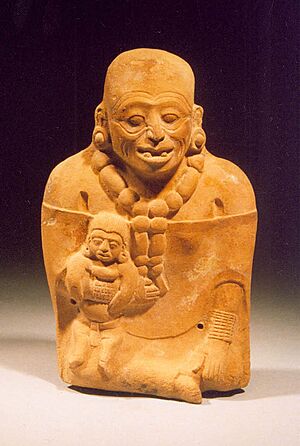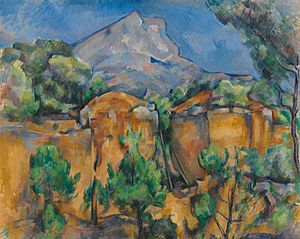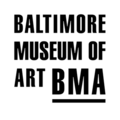Baltimore Museum of Art facts for kids
| Baltimore Museum of Art | |
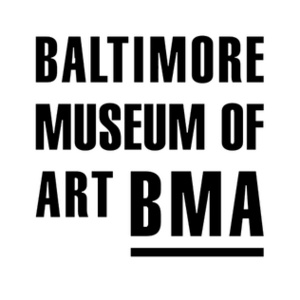 |
|

Baltimore Museum of Art in March 2018
|
|
| Established | 1914 |
|---|---|
| Location | 10 Art Museum Drive Baltimore, Maryland, 21218, U.S. |
| Public transit access | BaltimoreLink routes Silver, 21, 51, 94, 95 Charm City Circulator Purple Route |
|
Invalid designation
|
|
| Designated | 1987 |
The Baltimore Museum of Art (BMA) is a famous art museum in Baltimore, Maryland. It opened its doors in 1914. The BMA has a huge collection of about 95,000 art pieces. This includes over 1,000 works by the artist Henri Matisse. Many of these are from the special Cone Collection.
The museum also has amazing collections of prints, drawings, and photographs. You can see art from Africa, modern art by new and well-known artists, and European and American paintings. There are also sculptures, decorative arts, ancient mosaics from Antioch, and art from Asia. Plus, you can find textiles from all over the world.
The museum building is very large, about 210,000 square feet. It was designed in the 1920s by an American architect named John Russell Pope. The museum also has two beautiful gardens with sculptures from the 20th century. It is located next to the Johns Hopkins University campus, but it is a separate place.
A very special part of the museum is the Cone Collection. This collection was put together by two sisters from Baltimore, Claribel and Etta Cone. They were amazing collectors. They gathered many works by famous artists like Henri Matisse, Pablo Picasso, Paul Cézanne, and Vincent van Gogh. Most of these artworks were given to the museum. The museum also has 18,000 French art pieces from the mid-1800s. These came from the George A. Lucas collection. The museum calls it a "treasure" and one of the best French art collections in the country.
Since October 2006, the Baltimore Museum of Art and the Walters Art Museum have offered free general admission. This means you can visit without paying a ticket fee. The museum also has a popular restaurant called "Gertrude's Chesapeake Kitchen."
Contents
Museum History
Early Beginnings: 1900s
In 1904, a big fire destroyed much of downtown Baltimore. After the fire, city leaders decided Baltimore needed an art museum. A group of 18 people formed a committee to make this happen. Ten years later, on November 16, 1914, the museum officially started. It was designed like other big museums in New York and Boston.
At first, the museum had only one painting, Mischief by William Sergeant Kendall. The Peabody Institute held the art for a while. The committee then looked for a permanent home. By 1915, they chose the Wyman Park area. In 1917, Johns Hopkins University promised land near its campus for the museum.
Before moving to its permanent home in 1929, the museum was temporarily located in a mansion. This mansion belonged to Mary Garrett, a generous supporter. In 1923, the museum's first exhibition opened there. Over 6,775 people visited in the first week.
Designing the Permanent Home
The architect John Russell Pope was chosen to design the museum's permanent building in Wyman Park. Pope was known for his classical style. He designed many important buildings. The museum's cornerstone was laid on October 20, 1927. The building has three floors. It also includes rooms that were rebuilt from six historic Maryland houses.
The museum opened on April 19, 1929. Visitors saw Rodin's The Thinker in the Sculpture Court. Many art pieces on display were borrowed from Baltimore collectors. About 584 people visited the museum each day in its first two months.
By the 1930s, people felt the museum belonged to them. However, most visitors were wealthy and white. A report in 1937 said the museum needed to reach more people. Local artists also felt ignored. In response, the museum held the city's first exhibition of African-American art in 1939. Over 12,000 people visited this show in two weeks.
Many artworks that were first borrowed were later given to the museum. Important donors helped the collection grow. The museum expanded three times: the Saidie A. May Wing in 1950, the Woodward Wing in 1956, and the Cone Wing in 1957. These additions matched the original building's style.
Today, the museum has over 95,000 art pieces. This makes it the largest art museum in Maryland. It gets money from the City of Baltimore, nearby counties, the state, and many private groups.
Modern Era: 2000s and Beyond
The BMA welcomes over 200,000 visitors every year. Besides its art collection, it hosts special traveling exhibitions. It is a major art center for the region.
In 2018, the BMA decided to sell some artworks to buy new pieces by women and artists of color. This helped them add works by artists like Mark Bradford, Wangechi Mutu, and Amy Sherald. In 2019, the museum added a major new artwork by Mickalene Thomas in the East Lobby. This was part of a special art commission.
In November 2019, the museum announced it would only buy works by female artists in 2020. This was to help "correct the canon" of art history. To celebrate 100 years since women got the right to vote, all 22 exhibitions in 2020 focused on women artists.
Between 2012 and 2015, the BMA completed a $28 million renovation. This improved galleries for modern, American, African, and Asian art. It also made the building better for visitors. In November 2014, the historic Merrick Entrance reopened after almost 30 years. This was for the museum's 100-year anniversary. The renovation also improved the American Wing and added a new education center in October 2015.
Art Collections
African Art
The BMA was one of the first museums in the U.S. to collect African art. A large part of this collection came from Janet and Alan Wurtzburger in 1954. It has over 2,000 objects from ancient Egypt to modern Zimbabwe. The collection includes art from many cultures like Bamana and Yoruba.
You can see many types of art, such as headdresses, masks, figures, and jewelry. Many pieces were used in royal courts, performances, and religious events. Some are famous around the world. Highlights include a Lozi throne from around 1900 and a 2006 video by Theo Eshetu.
American Art
The BMA's American art collection includes paintings, sculptures, and decorative arts. These pieces range from colonial times to the late 1900s. The museum has art from the Baltimore area. This includes portraits by the Peale family and silver from Samuel Kirk & Son.
The American painting collection has works from the 1700s to modern art. You can see paintings by John Singleton Copley, Thomas Eakins, and Georgia O'Keeffe. There are also many prints, drawings, and modern photographs. Artists like Imogen Cunningham and Alfred Stieglitz are featured.
The BMA has collected works by African American artists for a long time. This started in 1939 with one of the first exhibitions of African American art in the country. The collection includes works by Joshua Johnson, Jacob Lawrence, and Henry Ossawa Tanner. It also has many pieces by modern artists.
The museum's American decorative arts include a large furniture collection. Many pieces came from Dorothy McIlvain Scott. A gift in 1933 started the silver collection. It now has objects by leading silversmiths from the 1700s and early 1800s. This includes the Annapolis Subscription Plate, the oldest silver object made in Maryland.
Antioch Mosaics
The BMA has a collection of Antioch mosaics. These came from excavations of an ancient city now called Antakya in Turkey. The Baltimore Museum of Art helped with these excavations from 1932 to 1939. They found 300 mosaic pavements. The BMA received 34 of these, and 28 are on display.
These mosaics are from the 2nd to the 6th centuries A.D. They show how art changed from ancient Greece and Rome to early Christian times. They also tell stories about life in this ancient city before earthquakes destroyed it. The mosaics are known for their large size and beautiful patterns.
Art of the Ancient Americas
This collection has art from 59 different traditions. These include the Aztec and Maya from Mesoamerica. It also has works from the Chimú and Muisca from South America. The collection covers art from 2500 BC to AD 1521. A main part of the collection was given by Alan Wurtzburger in 1958.
The collection is known for its West Mexico ceramics. This includes a Nayarit house model. You can also see a unique group of 23 figures in dance costumes. Other important pieces include an Olmec figure and portrayals of Maya and Aztec noblewomen.
Art of the Pacific Islands
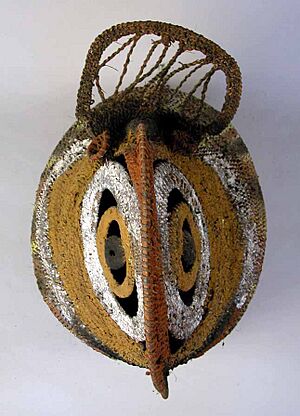
This exhibit shows artwork from different cultures in the Pacific Islands. These include Melanesia and Polynesia. The collection has jewelry, ornaments, and tapa cloths.
A special piece is a carved lizard from Easter Island. There is also a battle chest plate made from hundreds of Nassa shells. An 18th-century royal Hawaiian necklace is another highlight.
Asian Art
The museum's Asian art collection has works from China, Japan, India, Tibet, and the Near East. It is especially known for its Chinese ceramics. This includes pottery from the Tang dynasty (618–907). The collection has over 1,000 objects. Only some are on display at a time.
Some notable works include a life-sized bronze Guanyin from the early 1400s. This is known as the "Goddess of Mercy." There is also a horse figure from a Han dynasty tomb. The collection also has 475 Japanese prints and 1,000 textiles from across Asia.
European Art
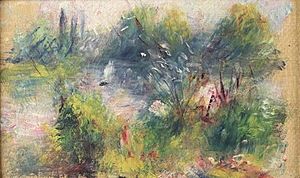
The European art collection at the BMA has works from the 1400s to the 1800s. Most of this collection came from gifts by Baltimore citizens. It has a large selection of 19th-century French art. This includes over 140 bronze animal sculptures by Antoine-Louis Barye.
The collection also has many decorative arts. These include jeweled snuff boxes, porcelain, and silver. The museum also shows a large collection of works on paper from the 1400s to the 1800s.
Highlights include Sir Anthony van Dyck's Rinaldo and Armida (1629). This painting was ordered by King Charles I of England. Other important works are Frans Hals' portrait Dorothea Berck (1644) and Rembrandt van Rijn's painting of his son Titus (1660).
In 2012, a Renoir painting called Paysage Bords de Seine reappeared. It had been stolen from the museum in 1951. After a legal process, a judge decided in 2014 that the painting belonged to the BMA.
Cone Collection
The Cone sisters, Claribel and Etta, built one of the most important collections of modern art in the U.S. They gave it to the BMA in 1949. Etta Cone started the collection in 1898. She bought five paintings by American Impressionist Theodore Robinson. The sisters then traveled to Paris every year. They visited museums and artists' studios.
In 1906, Etta bought her first work by Henri Matisse. The Cone sisters were among the first people to support Matisse. Etta collected his works throughout his career. Their collection has about 3,000 objects. This includes 500 works by Matisse. It also has masterpieces by Pablo Picasso, Vincent van Gogh, and Paul Cézanne. These were displayed in their Baltimore apartments before coming to the museum.
Contemporary Art
The BMA's Contemporary Wing opened in 1994. It closed for renovations in January 2011 and reopened in November 2012. It now has a gallery for light, sound, and moving image art. It also has a special gallery for prints, drawings, and photographs.
The collection features works by Olafur Eliasson, Jasper Johns, Robert Rauschenberg, and Yayoi Kusama. It also has new art from 21st-century artists. The works of American artist Bruce Nauman can be seen inside and outside the museum. The BMA has the second largest collection of Andy Warhol's later works in the U.S.
The Contemporary Wing was updated again in summer 2019. It now focuses on the creativity of black artists. This includes works by Roy DeCarava, David Driskell, and Joyce J. Scott.
Images for kids
See also
 In Spanish: Museo de Arte de Baltimore para niños
In Spanish: Museo de Arte de Baltimore para niños


